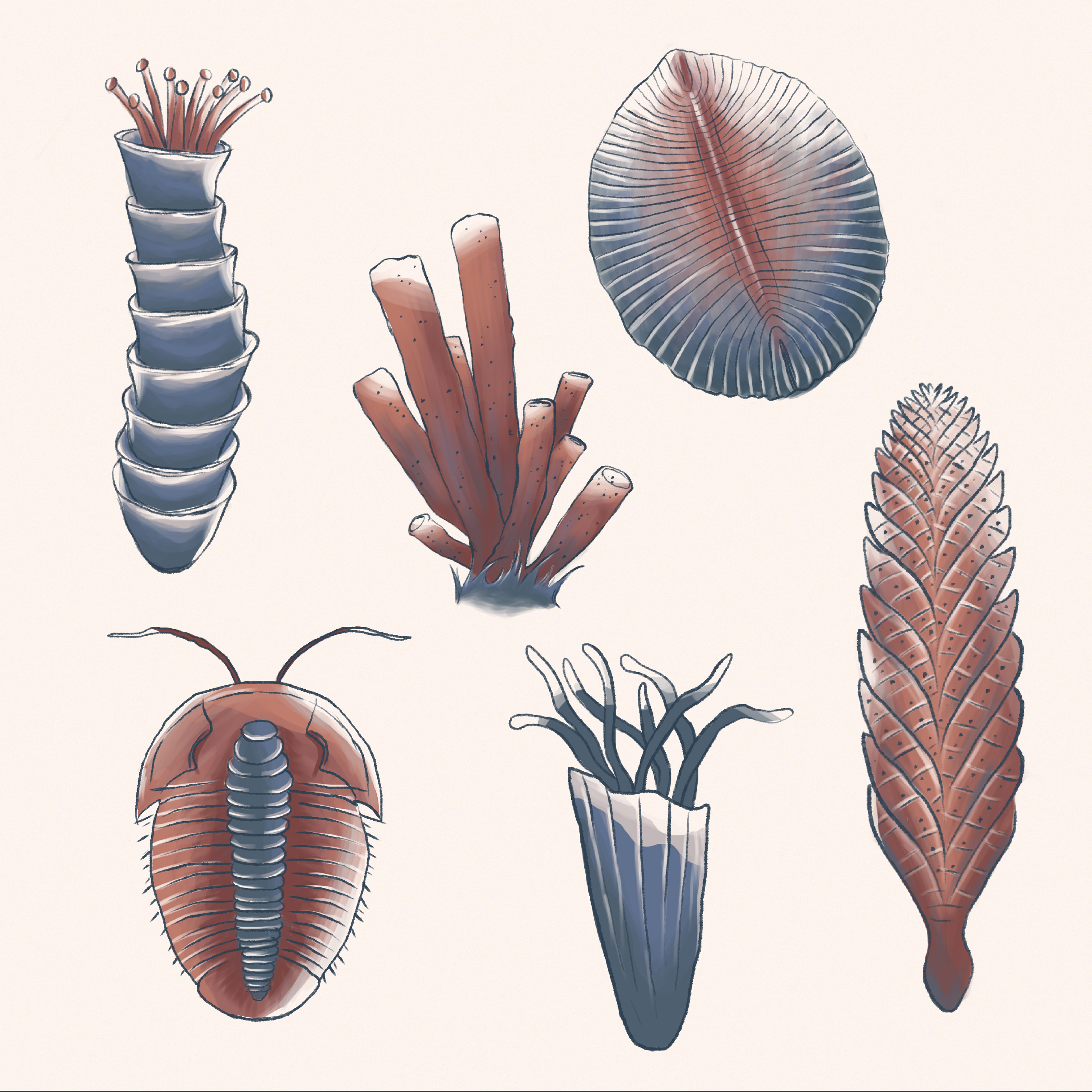From peculiar fossils to molecular remains of ancient lipids, studying how Precambrian life evolved and the conditions which may have triggered it, is critical towards uncovering the missing pieces in the animal evolution timeline.
This graphical timeline collates information from several research works, which have put forth evidences on what could be the earliest evidence of animal life-- ranging from molecular traces of ancient sponges, microscopic embryos, to strange-looking seafloor crawlers. This work focuses on the chunk of geological time known as the Neoproterozoic Era (1 billion to 541 million years ago), which witnessed the first appearance and expansion of multicellular life, extreme climate changes, rising atmospheric oxygen levels, and the first emergence of metazoans (animals) in the fossil record.
Well-preserved fossils can hold valuable clues on how the first animals came to be, and in what forms they existed in. Unfortunately, due to the limitations of preservation before the inception of biomineralization, the biological record of Proterozoic organisms is sparse and ambiguous. This is where biomarkers play their part, fossil biochemicals which allow researchers to study the chemical remnants of primitive animals even with the absence of tangible fossils.


Fossil reconstructions of Cloudina sp., Dickinsonia costata, Charnia masoni, Lantianella laevis, trilobites, and porifera (sponges).



This work is part of a literature review analysing the research advances and perspectives in Proterozoic life evolution and the origin of animals.


Sources: Adam et al., 2018; Bobrovskiy et al., 2018; Brocks et al., 2016; Brocks et al., 2017; Droser and Gehling, 2015; Love and Zumberge, 2021; Mills et al., 2018; Wood et al., 2019.